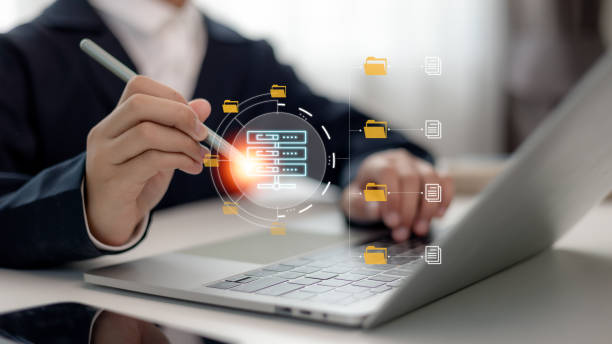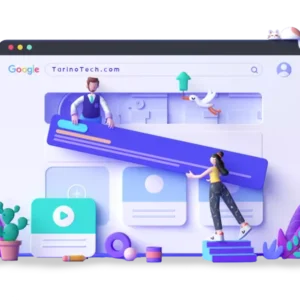What is Internal SEO and Why Does it Matter?
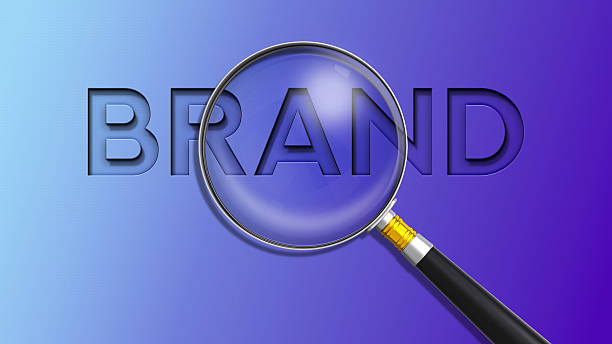
Internal SEO (On-Page SEO) refers to a set of actions that you take within your website to improve your site’s ranking in the search results of Google and other search engines.
These actions include optimizing content, site structure, HTML tags, and page loading speed.
The importance of Internal SEO lies in the fact that it helps search engines better understand your site’s content and display it to relevant users.
Without a strong Internal SEO strategy, even the best content may not be seen in search results.
To better understand, think of it as a large library.
If books are not properly categorized and labeled, it will be very difficult to find the book you are looking for.
Internal SEO does exactly this for your website and helps search engines organize and understand your content.
As a result, your website will rank better in search results and attract more traffic.
Also, the user experience is improved because users can easily find the information they need.
In short, Internal SEO is a necessary investment for any website that wants to succeed in the online world.
For example, by optimizing keywords related to your business (#keywords), you can increase your site’s ranking in relevant searches.
Did you know that a poorly designed online store can drive away up to 70% of your potential customers? Rasaweb transforms your sales by designing professional and user-friendly online stores.
✅ Significant increase in sales and revenue
✅ Complete optimization for search engines and mobile devices
⚡ [Get a free consultation from Rasaweb]
Keyword Research – The Foundation of Internal SEO
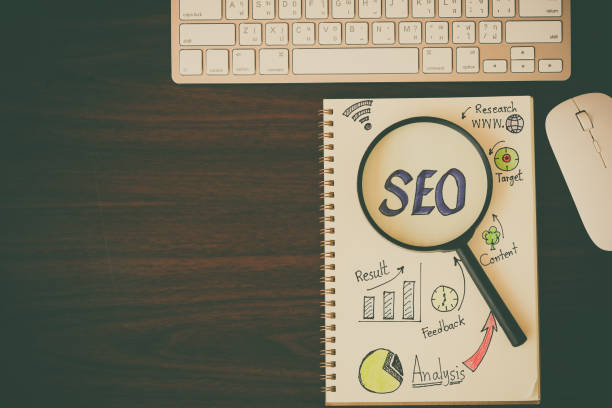
Keyword Research (Keyword Research) is the first and most important step in Internal SEO.
You need to find the words that users use to search for your products or services.
These words should be relevant to your business and have a suitable search volume.
To research keywords, you can use various tools such as Google Keyword Planner, Ahrefs, and SEMrush.
When choosing keywords, pay attention to the following points
Relevance: Keywords should be exactly relevant to your site’s content.
Search Volume: Keywords should have a suitable search volume (neither too low nor too high).
Competition: Keywords should have a suitable level of competition (neither too low nor too high).
After selecting keywords, you should use them in your site’s content.
However, be sure to use keywords naturally and relevantly and avoid filling content with keywords, as this can lead to your site being penalized by Google.
In fact, the main goal should be to provide valuable and useful content for users, and the use of keywords should be done naturally in this direction.
With proper keyword research, you can optimize your content to attract your target audience and improve your site’s ranking in search results.
This process helps you adjust your content strategy based on the needs and interests of the audience and ultimately increase your traffic and sales.
Optimizing Page Title (Title Tag) and Meta Description

The Title Tag and Meta Description (Title and Meta Optimization) are two important elements in Internal SEO that are displayed in search results.
The title tag is the main title of your page and should include the main keyword of the page.
The meta description is a short summary of your page’s content and should encourage users to click on your link.
When writing a title tag and meta description, pay attention to the following points
Appropriate Length: The title tag should be less than 60 characters and the meta description should be less than 160 characters.
Keyword: The title tag should include the main keyword of the page.
Attractiveness: The meta description should be attractive and persuasive and encourage users to click on your link.
Relevance: The title tag and meta description should be relevant to the page’s content.
An optimized title tag and meta description can increase your click-through rate (CTR) in search results and attract more traffic to your site.
For example, if your page is about “Best Practices for Internal SEO“, the title tag could be “Best Practices for Internal SEO in 2024″ and the meta description could be “In this article, learn the best practices for Internal SEO to improve your site’s ranking in Google.”
By using these techniques, you can attract more visitors to your website through search engines.
| SEO Element | Importance | Description |
|---|---|---|
| Title Tag | Very High | Displayed in search results, contains keywords |
| Meta Description | High | Short summary of content, attracts users to click |
| Heading Tags | Medium | Organize content, use keywords |
Optimizing Heading Tags (H1, H2, H3)

Heading Tags (Heading Tags Optimization) are used to organize the content of your page and help search engines understand the structure and main topics of your page.
The H1 tag should be the main title of your page and should include the main keyword of the page.
H2 and H3 tags are used for subheadings and should logically divide the content.
When using heading tags, pay attention to the following points:
Logical Use: Use heading tags logically and to divide content.
Keyword: Use related keywords in heading tags.
Hierarchical Structure: Use a proper hierarchical structure (H1 > H2 > H3).
Readability: Use heading tags to improve content readability.
A proper heading structure can help search engines better understand your page’s content and improve your site’s ranking in search results.
For example, if you are writing an article about “Internal SEO for Blogs,” you can use the H1 tag for the main title (“Internal SEO for Blogs”) and H2 and H3 tags for subheadings (such as “Keyword Research for Blogs,” “Optimizing Blog Content,” and “Link Building for Blogs”).
This helps search engines understand the main topics of your article and display it to relevant users.
Are you bothered by losing customers due to the outdated appearance or slow speed of your online store? Rasaweb’s team of experts solves these problems by designing professional online stores!
✅ Increase customer trust and brand credibility
✅ Amazing speed and great user experience
Get a free consultation with Rasaweb now ⚡
Image Optimization – Increase Speed and Improve SEO

Image Optimization (Image Optimization) is another important aspect of Internal SEO.
High-volume images can slow down your site’s loading speed and affect the user experience.
Also, unoptimized images miss an opportunity to rank in Google image search.
To optimize images, pay attention to the following points:
Reduce Volume: Reduce the volume of images without losing quality.
Choose the Appropriate Format: Use the appropriate formats (such as JPEG for photos and PNG for graphic images).
ALT Tag: Write an appropriate ALT tag with related keywords for each image.
File Name: Use descriptive file names for images.
By optimizing images, you can improve your site’s loading speed, improve the user experience, and improve your site’s ranking in Google image search.
For example, if you have an image of a product, change its file name to “product-name.jpg” and set its ALT tag to “Image of product
This helps search engines better understand your image and display it to users who are looking for that product.
Optimizing URLs – Proper and Readable Structure

URL Optimization (URL Optimization) is an important factor in Internal SEO that is often overlooked.
URLs should be short, readable, and contain relevant keywords.
A proper URL structure helps search engines better understand your site’s structure and helps users understand what each page is about.
When optimizing URLs, pay attention to the following points:
Shortness: URLs should be as short as possible.
Readability: URLs should be readable and understandable.
Keyword: URLs should include relevant keywords.
Use of Hyphen: Use a hyphen (-) to separate words in the URL.
An optimized URL can help search engines better understand your page and improve your site’s ranking in search results.
For example, instead of using a long and incomprehensible URL like “example.com/page?id=1234”, use a short and descriptive URL like “example.com/seo-internal”.
This helps search engines and users understand what your page is about.
Internal SEO is a continuous process and requires continuity
Quality Content – The King of Internal SEO

Quality Content (Quality Content) is the heart of Internal SEO.
Search engines are looking for content that is valuable, useful, and relevant to users’ needs.
If you want to succeed in Internal SEO, you should focus on producing quality content that answers users’ questions and solves their problems.
When producing quality content, pay attention to the following points:
Value: Content should be valuable and useful.
Relevance: Content should be relevant to keywords.
Uniqueness: Content should be unique and original.
Readability: Content should be readable and understandable.
Comprehensiveness: Content should be comprehensive and complete and address all aspects of the topic.
Quality content not only helps improve your site’s ranking in search results, but also increases user engagement with your site.
Users who find valuable content on your site are more likely to spend more time on your site, view more pages, and ultimately become customers.
For example, if you have a blog about “Internal SEO“, you can write articles about “Best Practices for Keyword Research”, “How to Optimize Page Title and Meta Description”, and “How to Build Internal Links”.
These articles should be comprehensive, complete, and contain valuable information that helps users improve their site’s Internal SEO.
| Content Type | Goal | Example |
|---|---|---|
| Blog Articles | Training, Information | Comprehensive Guide to Internal SEO |
| Videos | Attract Audience, Training | Internal SEO Training in 5 Minutes |
| Infographic | Present information visually | Internal SEO Checklist |
Internal Linking – Improving Site Structure and Distributing Authority

Internal Linking (Internal Linking) refers to the process of linking from one page on your site to another page on the same site.
Internal linking helps search engines better understand your site structure and helps users easily navigate your site.
Also, internal linking can help distribute authority between different pages on your site.
When internal linking, pay attention to the following points:
Relevance: Links should be relevant to the page’s content.
Anchor Text: Use descriptive anchor texts for links.
Appropriate Number: Use an appropriate number of links on each page (neither too few nor too many).
Important Pages: Link to important pages on your site.
A proper internal linking strategy can help improve the ranking of important pages on your site in search results and attract more traffic to these pages.
For example, if you have an article about “Internal SEO for Blogs”, you can link from this article to other articles about “Keyword Research”, “Content Optimization”, and “Link Building”.
This helps search engines understand the relationship between these articles and helps users easily access related information.
Is your current online store design causing you to lose customers and sales?
Rasaweb is your solution with its modern and user-friendly online store design!
✅ Significant increase in conversion rate and sales
✅ Create strong branding and gain customer trust
⚡ Get a free online store design consultation from Rasaweb!
Website Loading Speed – User Experience and SEO
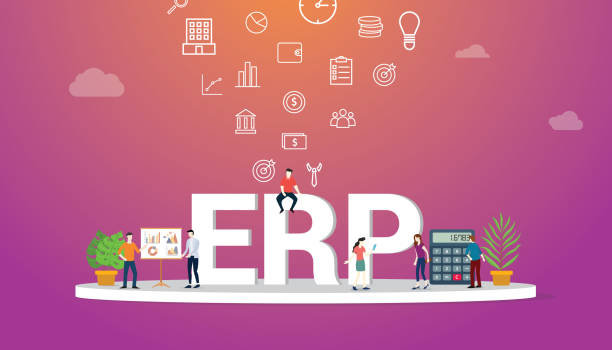
Website Speed (Website Speed) is an important factor in user experience and Internal SEO.
Users expect web pages to load in a few seconds, and if your site’s loading speed is slow, users may leave your site and go to a competitor’s site.
Also, Google uses website loading speed as one of the ranking factors.
To improve website loading speed, you can take the following actions:
Image Optimization: Reduce the volume of images.
Using CDN: Use a Content Delivery Network (CDN).
Enable Cache: Enable browser cache.
Reduce Code Volume: Reduce the volume of HTML, CSS, and JavaScript code.
Choose the Right Hosting: Use quality hosting.
By improving your site’s loading speed, you can improve user experience, reduce the bounce rate, and improve your site’s ranking in search results.
There are various tools such as Google PageSpeed Insights and GTmetrix that can help you measure your site’s loading speed and identify potential problems.
Mobile SEO – Optimization for Mobile Devices
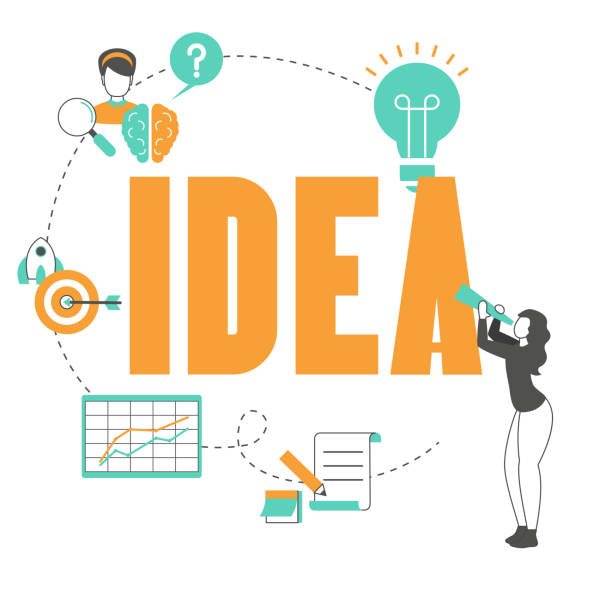
Mobile SEO (Mobile SEO) refers to optimizing your site for mobile devices.
Today, most users access the internet through mobile devices, and Google also prioritizes sites that are optimized for mobile.
If your site is not optimized for mobile, you may lose your ranking in search results and lose a lot of traffic.
To optimize your site for mobile, you can take the following actions:
Responsive Design: Use a responsive design.
Loading Speed: Optimize site loading speed for mobile.
Font Size: Use readable fonts with an appropriate size.
Distance Between Elements: Create enough space between different elements of the page.
Image Optimization: Optimize images for mobile.
By optimizing your site for mobile, you can improve the user experience for mobile users, increase the conversion rate, and improve your site’s ranking in mobile search results.
Optimize your site’s Internal SEO
Frequently Asked Questions
| Row | Question | Answer |
|---|---|---|
| 1 | What is Internal SEO (On-Page SEO)? | Internal SEO refers to a set of actions taken within a website (on its pages) to improve the site’s ranking in search engine results. This includes optimizing content, site structure, and HTML code. |
| 2 | Why is Internal SEO important? | Internal SEO helps search engines better understand page content and determine whether that page is relevant and valuable to users’ searches. This better understanding leads to higher rankings. |
| 3 | What is the first and most important step in Internal SEO? | Keyword Research is the most important initial step. By finding the right keywords, it is possible to produce targeted content that is relevant to users’ needs. |
| 4 | What is the role of the Title Tag in Internal SEO? | The title tag is one of the most important ranking factors and should include the main keyword. This tag is displayed as the page title in search results and affects click-through rate (CTR). |
| 5 | What is the importance of Meta Description? | The meta description does not directly affect ranking, but by providing an attractive summary of the page content in search results, it can encourage users to click and, as a result, increase the click-through rate (CTR). |
| 6 | Why is using headings (H1, H2, etc.) important in content? | Headings help structure content and improve readability for users and search engine crawlers. Using keywords in headings also helps the search engine better understand the topic. |
| 7 | What does image optimization in Internal SEO include? | Includes compressing images to reduce size, using descriptive and relevant file names, and filling in Alt tags (alternative text) with relevant keywords to help search engines understand the image content. |
| 8 | What is meant by Internal Linking in Internal SEO? | Internal linking refers to creating links between different pages of a website. This helps distribute page authority (Link Equity), improve user experience, and help search engine crawlers discover new pages. |
| 9 | Why is Page Speed important for Internal SEO? | Page loading speed is a direct ranking factor and greatly affects user experience. Slow pages can increase bounce rate and decrease user engagement. |
| 10 | What role does quality content play in Internal SEO? | Quality content that is comprehensive, unique, and valuable to the user is the core of Internal SEO. This content not only attracts and retains users, but also sends positive signals to search engines and helps with better rankings. |
And other services of Rasa Web Advertising Agency in the field of advertising
Smart Advertising Campaign: A fast and efficient solution for online growth with a focus on intelligent data analysis.
Smart Digital Branding: A fast and efficient solution for increasing website visits with a focus on attractive user interface design.
Smart Direct Marketing: Designed for businesses looking to increase sales through the use of real data.
Smart Conversion Rate Optimization: A fast and efficient solution for user interaction with a focus on attractive user interface design.
Smart Conversion Rate Optimization: An effective tool for online growth with the help of dedicated programming.
And more than a hundred other services in the field of internet advertising, advertising consulting and organizational solutions
Internet Advertising | Advertising Strategy | Advertorial
Resources
Content SEO Training: Comprehensive Guide to Producing SEO Content
,What is Internal Website SEO? Complete On-Page SEO Guide
,What is Internal SEO? (On-Page SEO) + Step-by-Step Internal SEO Training
,What is Internal SEO? Complete Guide to Website Internal SEO
? To shine in the online space, you need a reliable partner. Rasaweb Afrin, the leading digital marketing agency, paves your digital success path by providing comprehensive services including SEO, smart advertising and personal website design. Contact us today and transform the future of your business!
📍 Tehran, Mirdamad Street, next to the Central Bank, South Kazerun Alley, Ramin Alley No. 6

